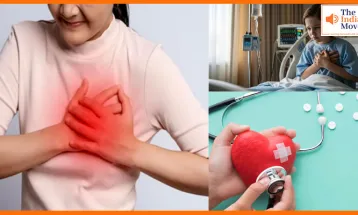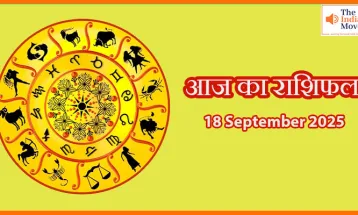
Back Pain: What Causes It and How to Find Relief
-
 Chhavi
Chhavi
- April 3, 2025
Say Goodbye to Back Pain
Back pain is one of the most common health problems that people cope. It can affect anyone, whether you are young or old, active or passive. This pain can range from a dull pain to sharp, shooting pain that can spread like your feet, in other parts of your body. Understanding what is the cause of back pain and how to stop it, it can help you manage or avoid it. In many cases, back pain is caused by a slipping disc, where your lower back changes the disk, and their position changes for several reasons, causing deep pain in your feet, back and even backbones. Sometimes, it becomes severe, and the pain turns into a shoulder area, causing cervical pain.
What Makes Up the Back?
The back is a complex structure made up of several parts that work together to keep us upright and allow movement. Here’s a quick breakdown of the key parts of the back:
• Spine: The backbone is divided into four main regions: cervical (neck), thoracic (upper back), lumbar (lower back), and sacral (tailbone).
• Vertebrae: These are the small bones that stack on top of each other and form the spine. They protect the spinal cord and give structure to the body.
• Spinal Cord: A long bundle of nerves that runs from the brain down the back. It sends signals between the brain and the body.
• Intervertebral Discs: These soft, cushion-like pads sit between the vertebrae. They help absorb shock and keep the spine flexible.
• Muscles: The muscles around the spine support movement and help maintain posture.
• Ligaments and Tendons: Ligaments connect bones to other bones, while tendons connect muscles to bones. Both support movement and stability.
When one or more of these parts is injured or becomes weak, it can lead to back pain.
Who Is Likely to Experience Back Pain?
Back pain can happen to anyone, but certain factors increase the risk of developing it. These include:
• Age: People over 40 often experience lower back strain as the discs in the spine can break down over time.
• Physical Fitness: Weak muscles in your back or abdomen make it harder to support your spine, increasing the risk of lower back muscle strain.
• Obesity: Carrying extra weight puts more pressure on your spine, leading to back ache relief issues.
• Job-Related Risk Factors: If your job requires heavy lifting, bending, or sitting for long periods, it could strain your back. Poor posture while sitting can contribute to back pain sitting chair problems.
• Stress and Mental Health: Anxiety, depression, and stress can make back pain worse by causing muscle tension.
Types of Back Pain
Doctors classify back pain based on how long it lasts:
Acute Back Pain: Sudden pain, often due to an injury or lower back spasm, lasting a few days to a few weeks.
Subacute Back Pain: Pain that lasts 4 to 12 weeks and might start gradually or suddenly.
Chronic Back Pain: Lasting more than 12 weeks, this pain can impact daily life significantly.
Symptoms of Back Pain
Back pain can feel different for everyone. Some common symptoms include:
Localized Pain: Pain in one spot on your back.
Radiating Pain: Pain that spreads from your back side pain to your legs, hips, or abdomen.
Pain That Worsens with Movement: Bending, twisting, or lifting can make the pain worse.
Pain That Improves with Rest: Some people find relief when resting but feel worse after prolonged sitting.
Morning Stiffness: Many people experience stiffness when they wake up.
When Should You See a Doctor?
Most back pain improves with home treatment. However, seek medical aid if:
• Your pain is more than a few weeks.
• You experience numbness, tingling or weakness in your feet.
• Your back pain is accompanied by unexplained weight loss or fever.
• You have a history of injury and pain persists.
Causes of Back Pain
Back pain can be caused:
• Muscle or ligament strain: Lifting heavy objects or sudden movements can reduce the back of the back.
• Herneted or broken discs: A slipped disk can press on the veins of the pass, which can cause back pain.
• decentral disc disease: aging causes wearing and tear, causing low back stress treatment issues.
• Spinal Stanosis: Deficiency of the spine pressing the veins.
• Arthritis and osteoporosis: These conditions can cause stiffness and fracture in the spine.
How to Prevent Back Pain
You can reduce the risk of back pain with these steps:
• Exercise Regularly: Activities like walking and swimming help prevent lower back muscle strain.
• Strengthen Your Core: Strong abdominal muscles support the spine and prevent back pain sitting chair discomfort.
• Maintain a Healthy Weight: Avoid excessive strain on your back side pain.
• Use Proper Posture: Keep your back straight when sitting.
• Choose the Best Office Chair for Back Pain: Using an ergonomic chair reduces back pain sitting chair issues.
• Lift Correctly: Bend your knees, not your waist.
Treatment Options for Back Pain
If you're experiencing back pain, try these remedies:
• Rest: Take short breaks, but avoid prolonged lying down.
• Cold and Heat Therapy: Ice reduces swelling, while heat relaxes muscles.
• Over-the-Counter Medications: Pain relievers help manage back ache relief.
• Physical Therapy: Strengthens lower back strain treatment muscles.
• Chiropractic Care: Spinal manipulation can help with lower back spasm relief.
Conclusion
Back pain is a common issue, but with the right prevention and treatment, you can manage it effectively. By staying active, maintaining good posture, and using the best office chair for back pain, you can prevent and reduce back pain sitting chair discomfort. If your back pain persists, consult a doctor for the right treatment. Most people find relief with the right care and continue to live active, healthy lives.
For more articles visit The India Moves
महत्वपूर्ण खबर
Categories
- देश (2154)
- अपराध (150)
- मनोरंजन (352)
- शहर और राज्य (339)
- दुनिया (882)
- खेल (389)
- धर्म - कर्म (655)
- व्यवसाय (184)
- राजनीति (568)
- हेल्थ (189)
- महिला जगत (56)
- राजस्थान (504)
- हरियाणा (62)
- मध्य प्रदेश (61)
- उत्तर प्रदेश (232)
- दिल्ली (265)
- महाराष्ट्र (177)
- बिहार (199)
- टेक्नोलॉजी (191)
- न्यूज़ (82)
- मौसम (110)
- शिक्षा (116)
- नुस्खे (84)
- राशिफल (384)
- वीडियो (1052)
- पंजाब (37)
- ट्रैवल (19)
- अन्य (57)
- जम्मू कश्मीर (86)
- उत्तराखंड (15)
- तेलंगाना (1)
- छत्तीसगढ (7)
- गुजरात (8)
- हिमाचल प्रदेश (1)
- पश्चिम बंगाल (9)
- असम (1)
- केरल (1)
- झारखंड (2)
- ओडिशा (0)
- त्योहार (19)
Vote / Poll
क्या राजस्थान मे बेरोजगारी का मुद्दा खत्म हो चुका है ..






